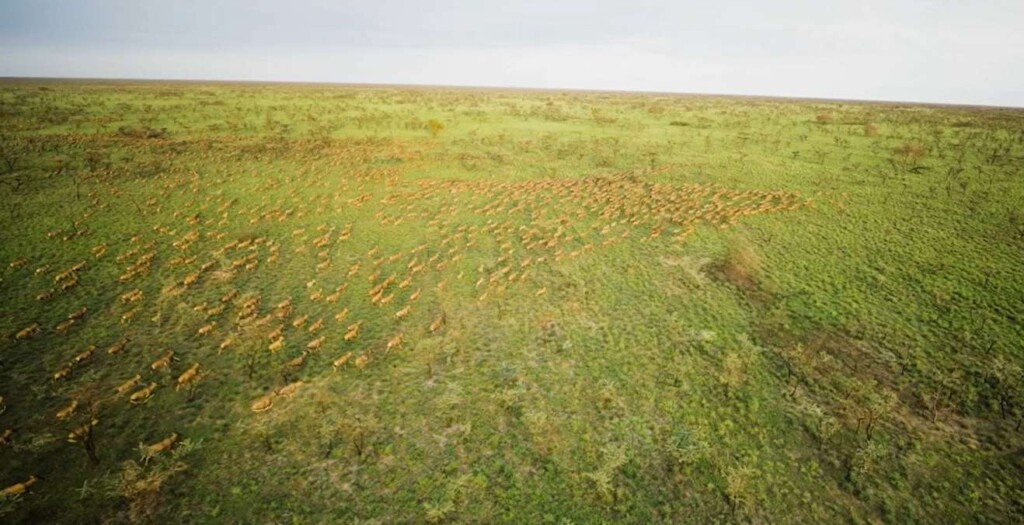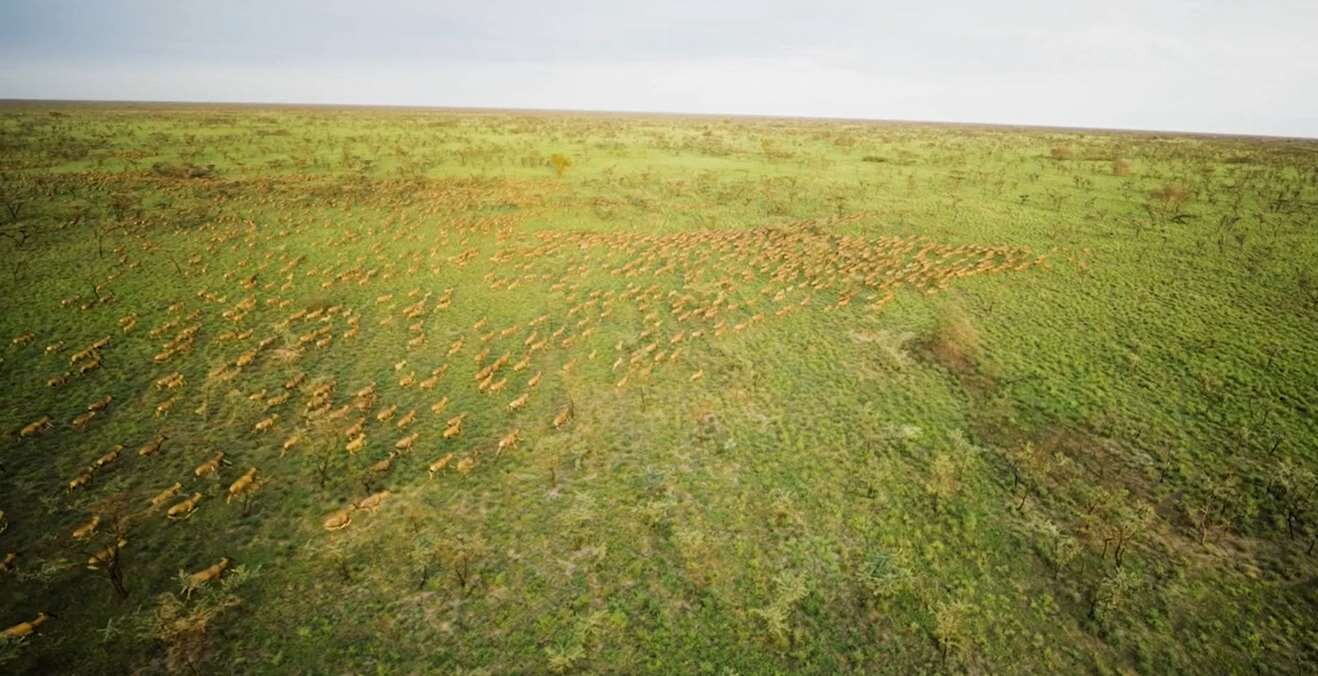
“The greatest conservation opportunity on the planet,” isn’t in the Amazon, the Andes, Australia, or anywhere else you’d likely imagine. It’s in South Sudan.
In a story that truly demonstrates how much there is left to explore in the world, the world’s largest migration of land mammals is now understood to take place in South Sudan, and the government, with the help of African Parks, is rushing to protect it.
Ecologists have long known the migration through South Sudan’s “No Man’s Land” exists, but didn’t really understand how it worked, or the scope of it. Unlike the caribou migrations across Canada, or the wildebeest migrations in Kenya’s Mara grasslands, No Man’s Land is filled with all manner of migrating species, including Mongalla gazelle, bohor reedbuck, white-eared kob, and tiang—all of which are antelope species.
Believing that the protection of these migration routes and the 6 million animals they play host to are the most significant opportunities for conservation anywhere on Earth, African Parks and the government of the Republic of South Sudan signed a 10-year agreement for the management of the No Man’s Land, currently located within Boma National Park and Bandingilo National Park, totaling 12,700 square miles, or four times the size of Yellowstone.
The 20-year civil war between what is now Sudan and South Sudan seems, according to African Parks, to have steered entirely clear of this massive area.
To start management and implement modern protections, African Parks, a non-profit that manages national parks for conservation across Africa, including in conflict zones, embarked on the largest GPS collaring survey of large animals ever undertaken, including 12 species at 126 GPS trackers.
Together with aerial surveys and assistance from members of the 17 different ethnic groups that live primitively in the areas, African Parks began to unravel the mystery of this massive movement of animals. The antelope moved in a wide circle, altering course to intercept any rainfall.
SIMILAR SUCCESS STORIES: Iberian Lynx Slinks Back From Brink of Extinction Within Just Two Decades of Conservation
“We flew for the first 30 to 40 minutes, and we didn’t see anything. I was like, ‘Oh, no, maybe it’s over. Maybe the wildlife has already disappeared,'” David Simpson, park manager for African Parks, told ABC News, sharing his insights from being aboard an aircraft for one of the surveys.
CHECK THIS OUT: Conservation Almost Always Provides Incredible Results, First-of-its-Kind Report Shows
“Then we get out there and we start hitting one, two, three, four. Then we start hitting hundreds and then we start hitting thousands, and then tens of thousands, then hundreds of thousands.”
MORE AFRICAN CONSERVATION: The First of 2,000 Privately Owned White Rhinos Get New Home – Rewilded by South African Conservancy
For the indigenous peoples, the migration is a symbol of abundance and balance in the natural world. They hunt, and so rely on the beasts for food, clothing, medicine, and shelter materials.
In order to help preserve their traditional life, African Parks has brought many of the people there on board to educate and work with them in their role in conserving the ecosystem for posterity.
WATCH the story below from African Parks…
SHARE This Great News From Africa With Your Friends Who Love Wildlife…




















